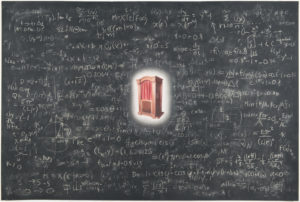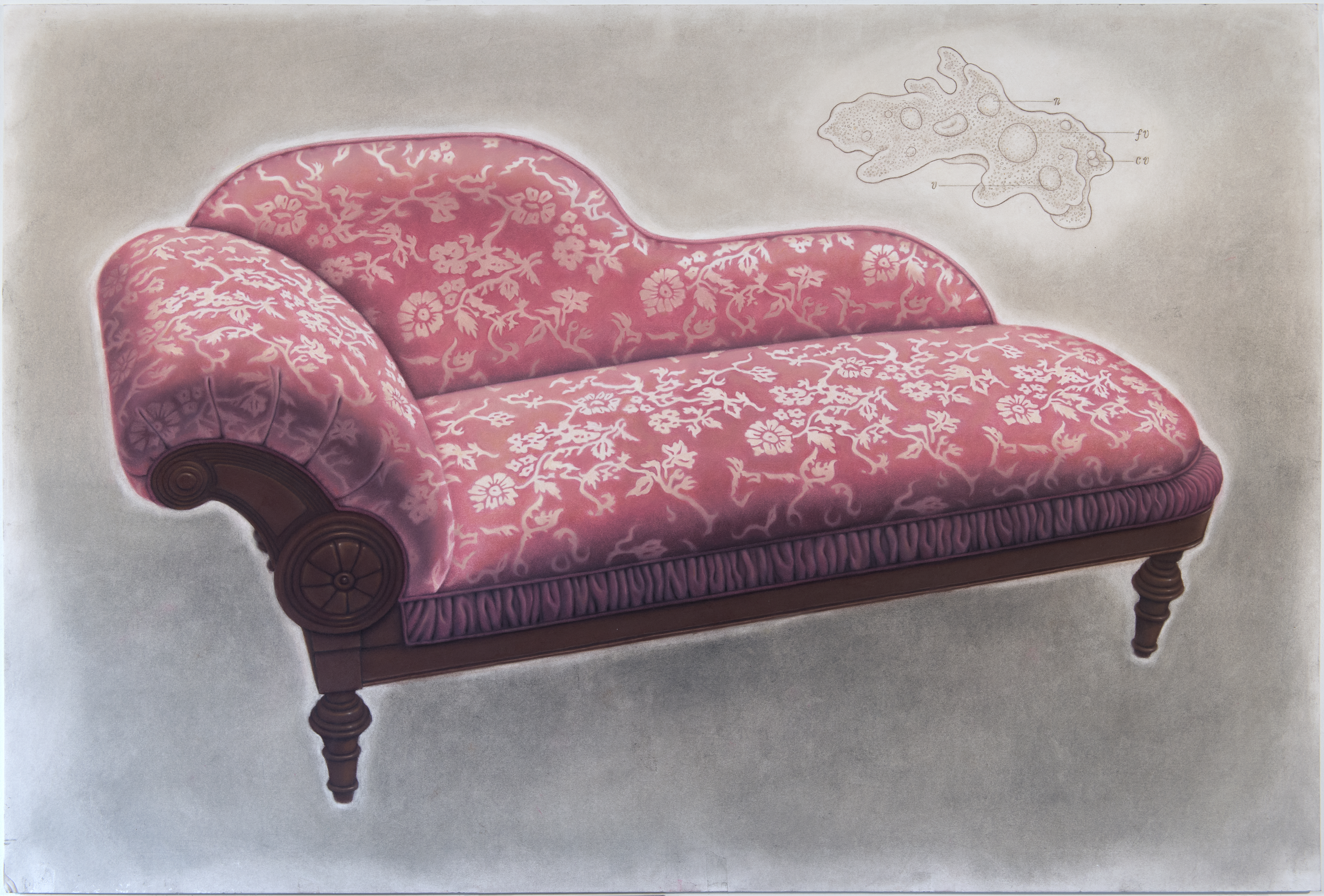Laura Forman’s debut solo show at Sloan Projects—a rather small collection of six new artworks that differ clearly from each other—induces curiosity and offers a wide range of possible interpretations. Created in 2016, her oeuvre (all works untitled) reflects the vibe of the political climate—the collective melancholy induced by America’s rejection of a female political leader, the increased risk of a nuclear war, the threats to reproductive rights, and the retrogression of humanism.
At first glance, a pastel on paper that depicts a white cloak against a black background appears to be a statement about fashion. However, the cloak, an accessory worn during the Hellenistic age and the 18th and 19th century, may be understood as a symbol representing the past. Since the cloak is drawn by itself without a model, Forman seems to have toyed with the idea of invisibility, a term used to describe the social realities faced by undocumented immigrants, especially Mexicans, who often become entrapped in America’s complicated immigration system. The image, while not explicitly political, conjures reflections on the lack of status of immigrants and the void created by deportation.

Laura Forman, Untitled, 2016 ©Laura Forman, courtesy of the artist and Sloan Projects, Los Angeles;
Another pastel depicts a red fainting couch with a white floral design and an image of what appears to be human cells containing chromosomes. The fainting couch was a popular piece of furniture during the Victorian era, used by women having fainting spells or experiencing hysteria. This image also seems symbolic. It takes the viewer back to a time when women didn’t have the right to vote or own property, and merely lived to care for family.
A pastel-on-board painting presents a confessional surrounded by differential equations solved by the Euler method. This artwork hints at the relationship between science and religion, as well as intelligence and morality. It sheds light on numbers being used for abstract thinking, instead of an instrument of popularity and wealth, and provides a space for science and the spiritual world, showing the value of those two disciplines by presenting them aesthetically.
Forman’s triptych is the most obscure and complex work in the show, composed of three drawings, including Trinity-Plutonium Implosion Fission (2016), Schnattlacher ProNose (2016), and Parmenides Unitary Theory of Being (2016). The first is a reference to the plutonium implosion bomb, which was used for nuclear testing at the Trinity site in New Mexico in 1945; the second, a clown’s nose; the third, an abstract of Parmenides’ theory of being. The merging of the three together echoes the absurdity of the nuclear arms race.
The highlight of the show is a massive sculpture of a foot made of polystyrene bead foam. The sculpted foot—that of a baby, positioned as if laid on its side—attracts through its smooth and milky-white surface and offers viewers a discussion about the pro-life versus pro-choice debate.
Overall, Forman’s art is skillfully rendered, intellectually ambitious, and engages through its style—a bridge between abstraction and representation. And yet, even by embedding them into a political context, her artworks somehow remain an enigma.


